How to make a D&D character: Best class, race and background combinations
Everything you need to know when creating a 5th Edition D&D character
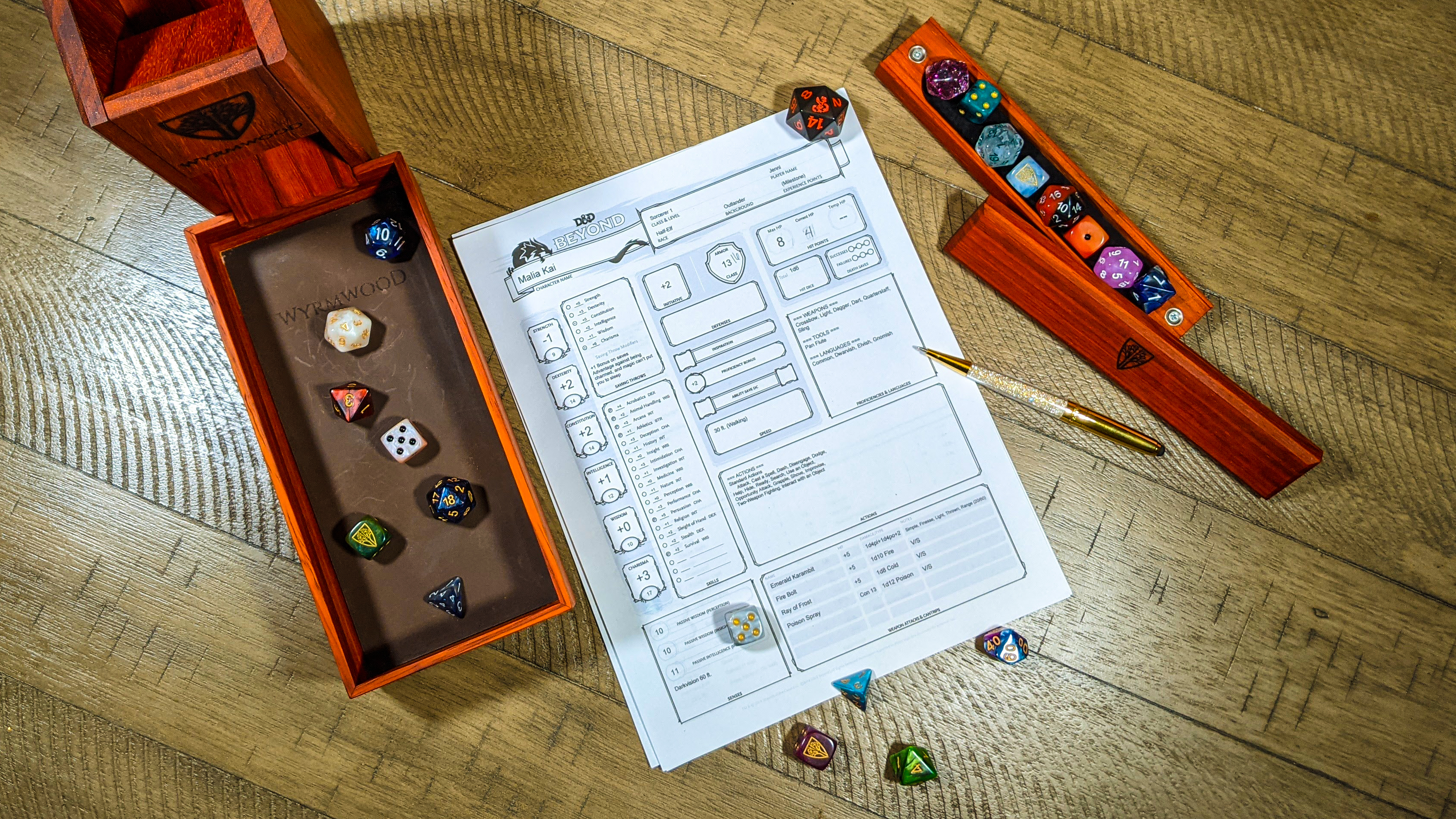
Playing Dungeons and Dragons online has become the new normal for a lot of D&D players around the country. We briefly mentioned a few resources you can use to create a D&D character, but we’re going to take a deeper dive into how to make a D&D character and what the best class, race and background combinations are.
To be clear, a good dungeon master (DM) won’t judge you for playing any combination of class, race and background that interests you. But, if you’re joining a combat-heavy campaign, you might consider maximizing the potential for your character. And with the recent release of the sourcebook Tasha’s Cauldron of Everything, there’s a seemingly endless number of combinations. If none of this is new to you, check out our larger DND Tips page for more advice on D&D 5e and other TTRPGs.
Here’s everything you need to know about how to make a D&D character and what the best class, race and background combinations are in D&D 5th Edition.
- See our best DND tips right now
- Check out the best virtual tabletop software for your TTRPG games
- How do I engage my players?
How to choose a D&D class and subclass
The D&D Player’s Handbook, as well as other D&D resources, start you off by making you choose a race, but it’s preferable to choose a class first since that’s an important factor determining how you’re going to play the game.
I’ll briefly explain each class, but we won’t be ranking the classes themselves. Instead, I’ll recommend some of the best subclasses for those classes, so you’ll have an idea of where to take the character when the time comes. (Subclasses unlock at level one or level three). Don’t worry, you can change subclasses later thanks to the new rules in Tasha’s Cauldron of Everything (assuming your DM allows it).
The Artificer is one of the newest classes from the Eberron: Rising from the Last War sourcebook. They’re tinkerers of sorts, using everyday objects as a catalyst for their magic. They’re essentially the mad scientists of D&D and have the power of steampunk on their side. The best subclasses for an Artificer are Alchemist and Battle Smith. I like the Alchemist the most because I get to live my dream of brewing random wild elixirs and acting like a straight-up kook 100% of the time.
The Barbarian is a badass warrior that quite literally rages into battle. If you want to play a class that will almost never die and can deal a crap ton of damage, then the Barbarian is your best bet. The best subclasses for a Barbarian are Ancestral Guardian, Storm Herald and Totem Warrior. I enjoy playing the Berserker subclass, but the best feature about this class, Frenzy, is sort of a double-edged sword, so I wouldn’t necessarily recommend it. If you’re looking for unpredictability, check out the new Path of Wild Magic subclass.
Sign up to receive The Snapshot, a free special dispatch from Laptop Mag, in your inbox.
The Bard is a magic-user that channels magical power through music. You can channel this power through any type of instrument (this is mostly roleplay based). Bards are very diverse on the battlefield; they’ll heal one turn, inspire their comrades in another then unleash wild magic damage down on their opponents. The best subclasses for a Bard are College of Eloquence, College of Glamour, College of Lore and College of Valor. If you want to get up close and personal with your enemies, then the College of Valor is pretty fun, especially when you turn level 14 when you can use a Bonus Action to make a weapon attack after using an Action to cast a spell.
The Blood Hunter is a class created by none other than Matthew Mercer from Critical Role. If you’ve always wanted to play The Witcher in D&D, now you can because that’s basically what a Blood Hunter is. They hunt and fight monsters by using their blood to deal wicked damage. The best subclasses for a Blood Hunter are Order of The Lycan and Order of The Profane Soul. I ran with the Order of The Profane Soul my first time around because I love being able to tap into Warlock magic, and since the Blood Hunter is constantly losing health, it’s nice to get some healing spells from your Celestial patron.
The Cleric gets their abilities from a higher power and uses it to become the most badass healer in the entirety of D&D. Typically, Clerics are decked out in armor, so they’re relatively tanky, and depending on the subclass that a Cleric goes with, they can be mighty damage dealers as well. The best subclasses for a Cleric are Arcana, Forge, Life, Light, Order and War. The best healer in all of D&D is almost always a Life Cleric, which happens to be my favorite to play.

The Druid is all about using nature magic and transforming themselves into different animal forms like a wolf or giant eagle. They can also control the environment around them to deliver devastating blows or even heal teammates. The best subclasses for a Druid are Circle of the Moon and Circle of Spores. I hate mushrooms, so I went with Circle of the Moon, since it sounds badass anyway. Plus, you can transform into even more dangerous animals.
The Fighter is the master of physical combat. They’re not as tanky as the Barbarian, but they can deal ridiculous damage numbers in a short period of time thanks to the Action Surge ability, which lets them take another Action phase on the same turn. The best subclasses for a Fighter are Battle Master, Cavalier, Eldritch Knight and Samurai. There’s also the Gunslinger, which is one of my favorites, but since that’s from Critical Role and does involve gunplay, you may want to ask your DM before choosing it.
The Monk is a master of martial arts that can punch and kick their way out of every conversation. Unlike other melee classes, you don’t have to rely on having a weapon on you at all times. Why? Because you are the weapon. The best subclasses for a Monk are Way of the Drunken Master, Way of the Long Death and Way of the Open Hand. I’ve played all three at one point, and while I love being able to get that Five Point Palm Exploding Heart Technique (not really what it’s called), with the Way of the Open Hand, the Way of the Long Death offers the best defensive capabilities so you can be a relentlessly mobile tank.
The Paladin is like a marriage between a Cleric and a Barbarian. They serve a god and kick tons of ass. Paladin’s get access to healing spells as well as some pretty wild magical abilities that can enhance their attacks and melt basically anything evil in their wake. However, you technically have to play a Lawful Good character, although you can always chat with your DM about bending the rules as it really comes down to the alignment of the deity you serve. The best subclasses for a Paladin are Oath of Conquest, Oath of Redemption, Oath of the Crown, Oath of Vengeance and Oathbreaker. I love Oath of Vengeance because you’re described as a Batman archetype. However, the latest Oath of the Watchers subclass seems pretty fun, as your oath is to be the guardian of the mortal realms, which gives you some more self-importance.
The Ranger is one of the more versatile classes, as they are proficient hunters. They can use a wide variety of weapons and even cast spells depending on the subclass. Rangers are natural trackers and excel at hunting their prey. The best subclasses for a Ranger are Gloom Stalker, Horizon Walker and Monster Slayer. Beast Master is the most popular because you get a pet that fights for you, which is cool, but you or your pet are going to spend a lot of time doing nothing thanks to the poor action economy (how many attacks, abilities, etc. you can do per turn). I’m interested in trying out the new Fey Wanderer subclass since it gives you some nifty evasion and deception spells -- it sounds great for a crafty character.

The Rogue is your typical glass cannon. You’ll have low hit points, but if you use stealth to your advantage and wait for the right opportunity to strike, you’ll end up doing such a ridiculous amount of damage that your DM’s jaw will drop in awe and frustration. The best subclasses for a Rogue are Arcane Trickster, Assassin and Swashbuckler. I love playing a Swashbuckler because it's like getting injected with Monk powers when using the Fancy Footwork feature to attack multiple enemies across the field. A subclass that I can’t wait to try is the Soulknife, which replaces your physical knives for daggers of psionic energy. Like a Monk, once again, you are the weapon.
The Sorcerer is a spellcaster that gets their power from inherent abilities. Unfortunately, there aren’t many unique spells the Sorcerer has that other magic-users don’t. However, choosing a Sorcerer nets you some pretty wild subclasses, some that make the typical squishy magic-user into a tank. The best subclasses for a Sorcerer are Divine Soul, Draconic Bloodline and Shadow Magic. My favorite D&D character is a Draconic Bloodline Sorcerer thanks to their natural armor ability. Their Armor Class (AC) is 15, but if they use a reaction to cast Shield, their AC shoots up to 20, making them incredibly tough to hit. In Tasha’s Cauldron of Everything, there’s the Clockwork Souls subclass that I’m dying to test, which gives you some incredible support and healing abilities.
The Warlock is a magic user that gets their power by striking a deal with an extraplanar entity. You don’t have to be the stereotypical Warlock that strikes a bargain with the devil (in this case, a fiend). Your patron will actually determine which subclass you go with, so this is a level 1 choice. The best subclasses for a Warlock are The Archfey, The Fiend and The Hexblade. The latest new addition is The Genie, which seems pretty fun, and you can even choose which element you want to deal with as well: Earth, Air, Fire or Water. Depending on the element you choose, you’ll get access to a list of different spells. I plan on going with the Earth one (Dao), which gives you a host of creative damage, support and RP-worthy spells.
The Wizard gets their magical power by taking the time to learn it the hard way. Wizards get a bunch of unique spells that Sorcerers don’t have access to, but unfortunately, they’re ridiculously squishy. The best subclasses for a Wizard are School of Abjuration, School of Divination and War Magic. If you’re interested in time manipulation, check out the Chronurgy Magic subclass, which is from Matt Mercer’s Explorer's Guide to Wildemount sourcebook. It’s a powerful subclass that can get you to manipulate dice rolls.
How to choose a D&D race
When you’re choosing the race you want to play, it’s best to think about roleplay first. Who do you want to be? This is a world where you can be a giant stealthy assassin or a tiny indestructible warrior, so don’t worry about the best combinations, per se.
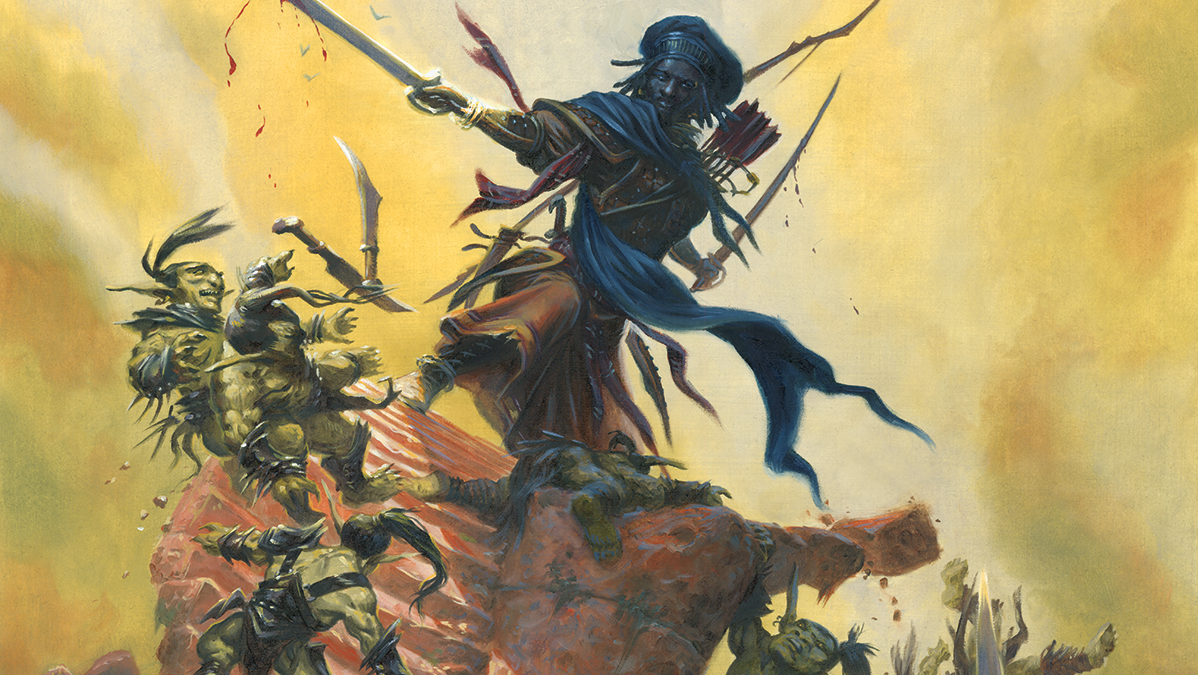
I like to take a tour down the D&D Beyond races page to inspect the default pictures of each race to get an idea of what I want to play. Sometimes searching fan art of a particular race inspires me as well.
If you are looking for the best matchup for your class and race, we’ve picked out the best race and class combinations based on ability spreads and unique features. However, if you’re following along with the Tasha’s Cauldron of Everything sourcebook, you can swap where ability points are allocated in each race to create something that better suits how your character grew up and where they were raised. For example, Half-Orcs get +2 Strength and +1 Constitution. But if you’re playing a Rogue, you can go for +2 Dexterity and +1 Charisma instead. Just be sure to talk to your DM about how you want to create your character.
For the Artificer, I just can’t help playing the wacky Gnome (small humanoids), but more specifically, the Rock Gnome. They suit an Artificer incredibly well thanks to their features: Artificer’s Lore (double your proficiency bonus for certain History checks) and Tinker (this lets you create devices that mix well with an Artificer’s Magical Tinkering ability).
For the Barbarian, I’m a fan of playing the Half-Orc (part-human, part-orc) because they get a Strength and Constitution increase as well as cool features like Savage Attacks (roll an additional damage die on critical hit) and Relentless Endurance (drop to 1 HP instead of going unconscious).
For the Bard, Tieflings (part-human, part-fiend) are my go-to thanks to some of their cunning abilities. Specifically, I like to go with the Dispater Tiefling, which gives you access to spells: Thaumaturgy (manifest minor wonders), Disguise Self (make yourself look like someone else) and Detect Thoughts (you can learn the surface level thoughts of a creature).
For the Blood Hunter, I rolled a High Elf (a race that originated in the Feywild) because they give you an additional Intelligence boost as well as a free cantrip from the Wizard spell list. Since Blood Hunters have access to only the Warlock spell list, this is a great opportunity to score an otherwise inaccessible spell, like Shape Water (gives you the ability to manipulate water within a five-foot cube).
For the Cleric, my first one was a Protector Aasimar (part-human, part-celestial). Why? Because the Radiant Soul feature gives you freakin’ wings! Nothing is more badass than a healer flying to your rescue. Unfortunately, my poor character is still level one so I didn’t get to experience this yet (sad face).
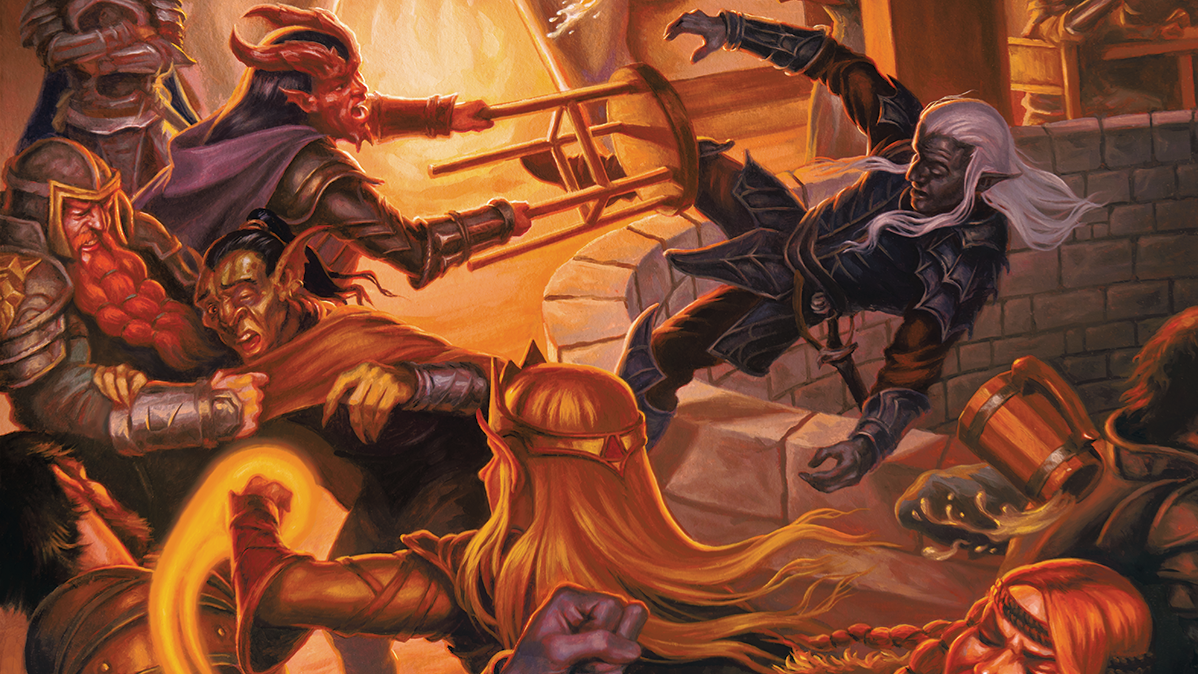
For the Druid, the Firbolg (a reclusive race of giant-kin) is a great choice, and that’s not because Taliesin Jaffe plays one in Critical Role (well, maybe), but also, it gives you access to Speech of Beast and Leaf (lets you communicate with beasts and plants in a limited manner), which is perfect for a Druid. Additionally, you get some neat additional magical spells, like Detect Magic and Disguise Self.
For the Fighter, it’s not even a choice, go with the Aarakocra (bird-people). With the ability to fly at a speed of 50 feet per movement, you can dash right into a foe’s melee range, or keep your distance and wail them with arrows, or bullets if you’re a Gunslinger.
For the Monk, how can you turn down being a Tortle (turtle-people)? Thanks to their Natural Armor, you already start with an Armor Class of 17. According to that rule, your Dexterity modifier doesn’t increase your AC, which technically cancels out the boost from Unarmored Defense. However, Unarmored Defense also calculates in your Wisdom modifier, so technically, you can get your AC to 22 with +5 Wisdom (if your DM allows). To top that off, Shell Defense (withdraw into your shell as an action) gives you a bonus +4 to AC, totaling up to 26 AC. The only downside to being a Tortle is the ability increase in Strength as opposed to Dexterity, but per the new rules introduced in Tasha’s Cauldron of Everything, you can talk to your DM about swapping those stats. But good luck pitching this to your DM; Tortles can be overpowered.
For the Paladin, nothing seems more fitting than a Triton (humanoids that hail from the Elemental Plane of Water). These are the noble guardians of the deep ocean floor, if you’re going for a righteous warrior, you might as well double down. Plus, you get some wild abilities. You can easily breathe air and water, you have resistance to cold damage and you can communicate to other beasts that can breathe water (this ability is very limited, however). On top of that, you get the Control Air and Water feature, which gives you access to some useful spells: Fog Cloud (create a 20-foot-radius sphere of fog), Gust of Wind (create a 60-foot long, 10-foot wide line of strong wind) and Wall of Water (create a wall of water up to 30 feet long, 10 feet high, and 1 foot thick).
For the Ranger, playing a Kenku (flightless avian humanoids) feels like a natural fit, since both tend to live at the edge of society. They have some pretty crafty abilities and excellent ways to lure out your prey. With Expert Forgery, you can duplicate another creature’s handwriting and craftwork. Meanwhile, the Mimicry feature gives you the ability to mimic sounds you have heard, including voices. Additionally, you also get a proficiency bonus in two of the following skills: Acrobatics, Deception, Stealth and Sleight of Hand.

For the Rogue, I wouldn't miss the opportunity to play a Tabaxi, which is a cat person, reminiscent of the popular Khajiit race from The Elder Scrolls series. As a Tabaxi, you get proficiency in the Perception and Stealth skills, which frees up more skills in your Rogue proficiency list. You also get Feline Agility, which lets you double your speed in a turn (if you also dash, that means you can move 120 feet in one turn). Finally, you get Cat’s Claws, which lets you deal slashing damage equal to 1d4 + your Strength modifier with your claws, so if you lose your daggers or bow, you’re still a force to be reckoned with.
For the Sorcerer, I personally chose to play a Half-Elf (part-human, part-elf), since I got a boost in Charisma (the primary casting ability for a Sorcerer) and gained proficiency in two skills of my choice. One of the more useful abilities is Fey Ancestry, which not only gives me Advantage (the ability to roll twice and take the higher number) on saving throws against being charmed, but magic can’t put me to sleep.
For the Warlock, a good choice is a Satyr (part-human, part-goat) as long as your DM is okay with you pulling races from the Mythic Odysseys of Theros sourcebook. Satyrs will give you a bonus to your Charisma (the primary casting ability for a Warlock) and your Dexterity, which will beef up your AC. But the most important feature is Magic Resistance, which gives you Advantage on saving throws against spells and other magical effects. That feature is a serious game changer when you’re up against a boss. You also get some good Charisma proficiencies, like Performance and Persuasion. And while it might not make a difference to a Warlock’s functionality, you can jump higher and use your horns to make unarmed strikes equal to 1d4 + your Strength modifier.
For the Wizard, it doesn’t hurt to be yourself, a.k.a. a Human. However, instead of the basic version, I suggest going with the Variant Human, which nets you a free Feat at level one. You can use that to gain the Spell Sniper feat, which doubles the range of your spell attacks that require you to roll. It also gives you an additional cantrip (one that requires an attack roll). Variant Humans also gain proficiency in one skill of their choice. Keep in mind that you don’t get the plus one to your stats across the board anymore, but rather, two different ability scores of your choice increase by 1.
How to choose a D&D background
The last basic choice you make when creating a character is establishing a background. This serves as a general idea for what your character did before they went off adventuring. I advise you to choose whatever fits your character best and don’t worry about how the bonuses impact gameplay.
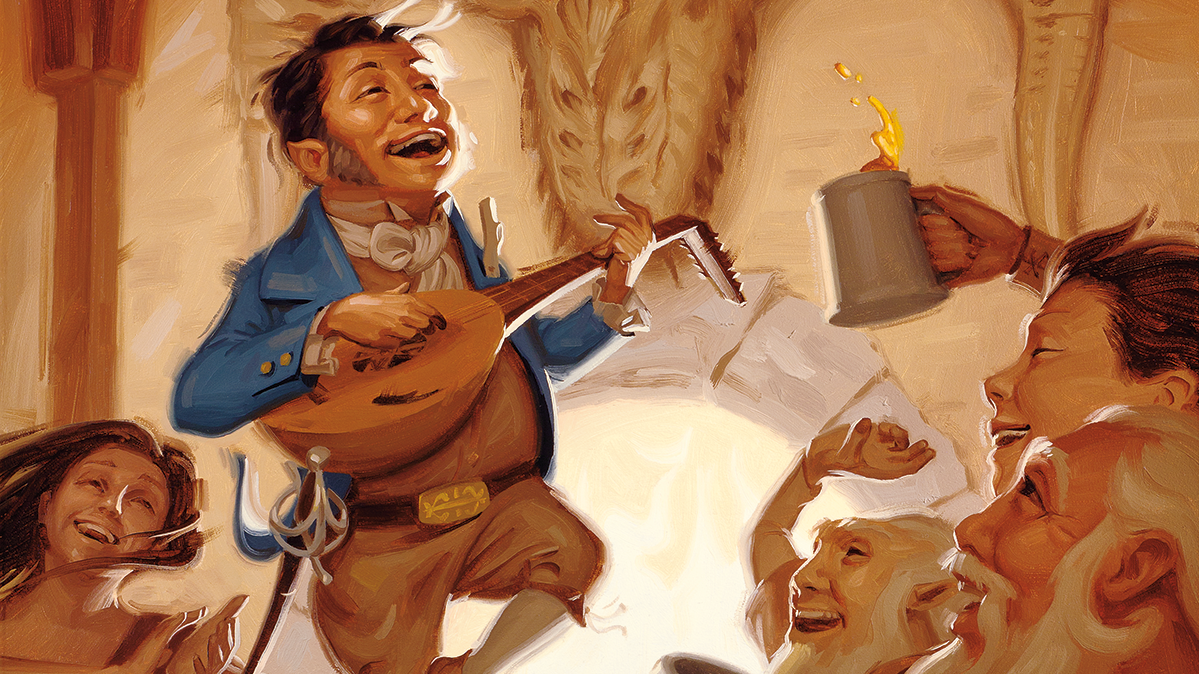
However, some backgrounds do flow best with specific classes thanks to the skills and abilities they offer. If you’re interested in a background that we don’t talk about, a good way to know if it maximizes your class’s potential is if the skills it offers are rooted in your primary ability. Additionally, consider that there are rules in Tasha’s Cauldron of Everything that let you swap out proficiencies for things that make more sense, and you can even custom tailor your own background, so talk with your DM if none of the backgrounds below or in the game suit your character.
An Artificer would benefit the most from a Sage background since you get two Intelligence skills (Arcana and History) and Intelligence is the primary ability for this class. You also get to learn two additional languages of your choice, which is great for a character that’s more than likely to shop around for magical items. Plus, the Researcher feature is awesome. If you don’t know a piece of information, you’ll often know where and from whom you can obtain it.
A Barbarian works well with quite a few backgrounds -- I even went with a Criminal background for one of my characters, but the Folk Hero suits a stereotypical hero Barbarian well. You get two skills from the Barbarian skill list (Animal Handling and Survival) and you also gain proficiency in riding land vehicles, so if you like being the driver, this is great for you. The Rustic Hospitality is also a great feature if you ever find yourself into a bit of trouble, as you’ll be able to find a place to hide, rest or recuperate among other commoners.
A Bard works best as the “face” of the group, which means they’ll be handling all the Persuasion, Intimidation and Deception rolls since their Charisma is naturally high due to it being their primary ability. Any background with Charisma skills is typically a good choice, but my favorite is the Courtier. You get two face skills (Insight and Persuasion) as well as two additional languages, so there’s a higher chance of talking your way out of a situation. And the Court Functionary feature gives you access to the records and inner workings of any noble court or government you encounter.
A Blood Hunter easily fits with an Urban Bounty Hunter (although, I went with Urchin for backstory reasons). This background offers you a diverse set of skills to choose from, specifically two from Deception, Insight, Persuasion and Stealth. You also get to choose two from a gaming set, a musical instrument and thieves’ tools. I absolutely recommend choosing thieves’ tools (lets you pick locks) and tossing one of the others. With the Ear to the Ground feature, you’ll gain access to a specific segment of society that your targets move through.
A Cleric typically gets stuck with the Acolyte background because it fits so well, but a great option that doesn’t tie you to a religious order is the Hermit. Since you’re going to be wise as hell, you’ll benefit from the Medicine skill (although, it’s arguably useless thanks to your healing), but you also get a free Religion skill, which is more useful but relies on Intelligence. Okay, so the skills don’t blend that well, but you do get proficiency with a Herbalism kit, so you can craft potions as well as a number of tonics that your DM allows. The Discovery feature (gives you access to a unique and powerful discovery) is interesting, but has more to do with roleplay -- you can work with your DM to see how this benefits you.
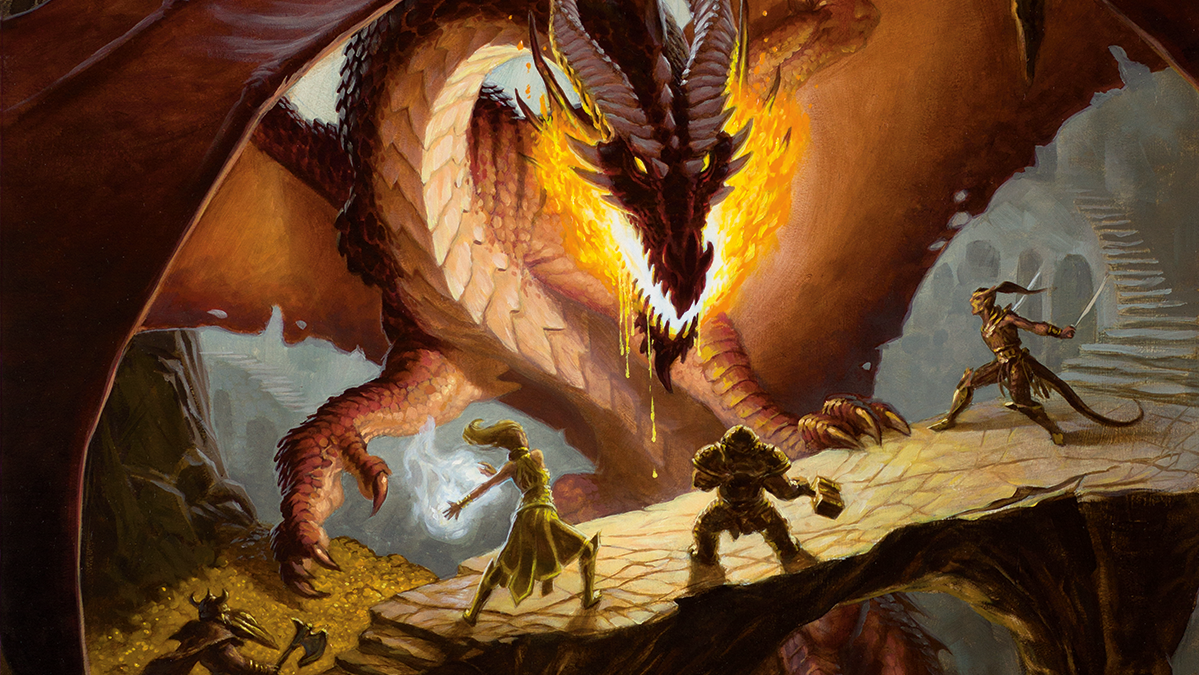
A Druid can seamlessly match up with many backgrounds, but a super interesting one is the Faction Agent. This will give you Insight (a Wisdom-based skill) and one Intelligence, Wisdom or Charisma skill of your choice depending on the faction you choose. There are six factions listed in the Sword Coast Adventurer's Guide sourcebook, but if you’re doing homebrew, you and your DM could work something out. The feature you get is called Safe Haven, which gives you access to your faction’s secret network of supporters and operatives. You also get to learn two additional languages.
A Fighter matches with the Soldier rather well. You get two skills already in the Fighter list: Athletics and Intimidation. You also get proficiency in land vehicles as well as a gaming set of your choice. It’s not a lot, but the feature Military Rank can be useful in many situations, as soldiers loyal to your former military organization still recognize your authority and influence. Keep in mind that playing a character with a Soldier background doesn’t tie your feelings or loyalties. They are completely up to interpretation, so nothing is set in stone until you write it down.
A Monk going for an unconventional background might want to look at the Urchin. Dexterity is your primary ability, so you might as well capitalize on that with skill proficiencies in Sleight of Hand and Stealth as well as tool proficiencies in the disguise kit and thieves’ tools. If your character loves the city -- even better! The feature City Secrets gives you a good idea of where the secret passages are in cities. Additionally, you’ll be able to travel between any locations in the city twice as fast (if you lead your companions, they’ll also benefit from this).
A Paladin is a tricky one, but the City Watch / Investigator background seems like a fun choice. This background is split into two variants -- it’s a little weird. But the basic version gives you proficiency in Athletics and Insight, while the Investigator variant replaces Athletics with Investigation. You’ll want the former, but I don’t see why you can’t be an Investigator and still keep City Watch skills (talk to your DM about it). The feature you’ll get is Watcher’s Eye, which gives you knowledge about the watch and dens of criminal activity. You also get to learn two additional languages.
A Ranger plays naturally with the Outlander background, but you’ll benefit the most from the Criminal / Spy background if your party doesn’t have a Rogue. Since your primary ability will be Dexterity, the Stealth skill and thieves’ tools will be incredibly useful. You also get proficiency in the Deception skill and one type of gaming set. You’ll get the Criminal Contact feature, which gives you a reliable and trustworthy contact who acts as your liaison to a network of other criminals. The Spy variant nets you nearly the same skills, but you can tweak the wording of your feature a bit with your DM to give you access to government or spy networks instead.

A Rogue has many workable options for a background, but to keep the backgrounds unique on this list, let’s go with Charlatan. Since you already get thieves’ tools as a Rogue, it would be a missed opportunity to not capitalize on the Charlatan’s Disguise kit and Forgery kit proficiencies. You also get the Deception and Sleight of Hand skills. The False Identity feature is also pretty neat, as it gives you a complete second identity that includes documentation, established acquaintances, and disguises that allow you to assume that persona.
A Sorcerer works great with any background that gives you Charisma-based skills, but because I love playing my Sorcerer, let me tell you about the Pirate life. No, the Athletics and Perception skills aren’t based on Charisma, and yes, the chances that you’ll have a nautical campaign might be low, but what’s cooler than a badass pirate fire mage? Nothing. The Bad Reputation feature also lets you get away with petty crime (heh). I guess if the pirate life doesn’t appeal to you, you could always go with a Guild Artisan / Guild Merchant.
A Warlock typically gets lumped in with a shady crowd, but you can craft a super interesting backstory with the Knight of the Order background. You get the Persuasion skill and a choice between Arcana, History, Nature and Religion depending on the order you choose. You also get an additional language and proficiency in a type of gaming set or musical instrument of your choice. With the Knightly Regard feature, you can get help from people that are either within or sympathetic to your order.
A Wizard needs to take advantage of their high Intelligence, so the Cloistered Scholar background is a pretty good choice. You get the History skill plus your choice between Arcana, Nature or Religion. The feature you get is Library Access, which gives you near-full access to your local library and even some access to libraries across the realms. You also learn two additional languages.
Accessibility in D&D
It’s important to mention that D&D is all about having fun and being comfortable with the character you’re making. There are plenty of tools out there to create inclusive characters.
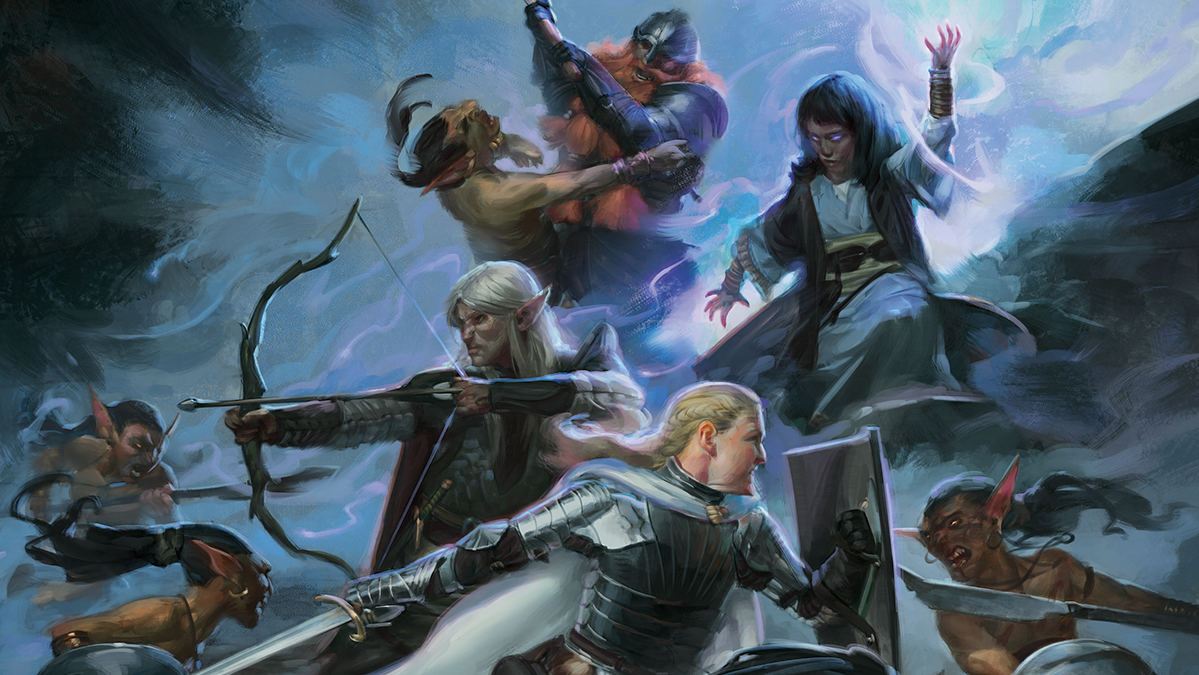
The most recent popular ruleset at the heart of undeserved controversy is the Combat Wheelchair, which you may have seen used on a recent episode of Critical Role. Sara Thompson, the disability consultant for R. Talsorian Games, created the Combat Wheelchair as well as several subclasses and backgrounds that revolve around disability. You can find her resources here.
Most important rule: Have fun
All of the guides in the world won’t help you craft the best D&D character because the best character is the one that you can actually connect with and feel comfortable playing as.
I highly recommend picking up Tasha’s Cauldron of Everything to check out the rules on customizing your origin, changing skills and changing your subclass. Obviously, you could always homebrew your character into existence, but these give you some general rules on how to do so. This is also a big relief for DMs, because when you’re dealing with homebrew, you won’t have to wrap your head around whether or not your player’s character is overpowered or underpowered.
Chatting with your DM about the rules is the best thing you can do because as long as they’re up for it, you can create something that no one on Earth has played yet, and that’s the beauty of Dungeons & Dragons.

Rami Tabari is the Reviews Editor for Laptop Mag. He reviews every shape and form of a laptop as well as all sorts of cool tech. You can find him sitting at his desk surrounded by a hoarder's dream of laptops, and when he navigates his way out to civilization, you can catch him watching really bad anime or playing some kind of painfully difficult game. He’s the best at every game and he just doesn’t lose. That’s why you’ll occasionally catch his byline attached to the latest Souls-like challenge.
